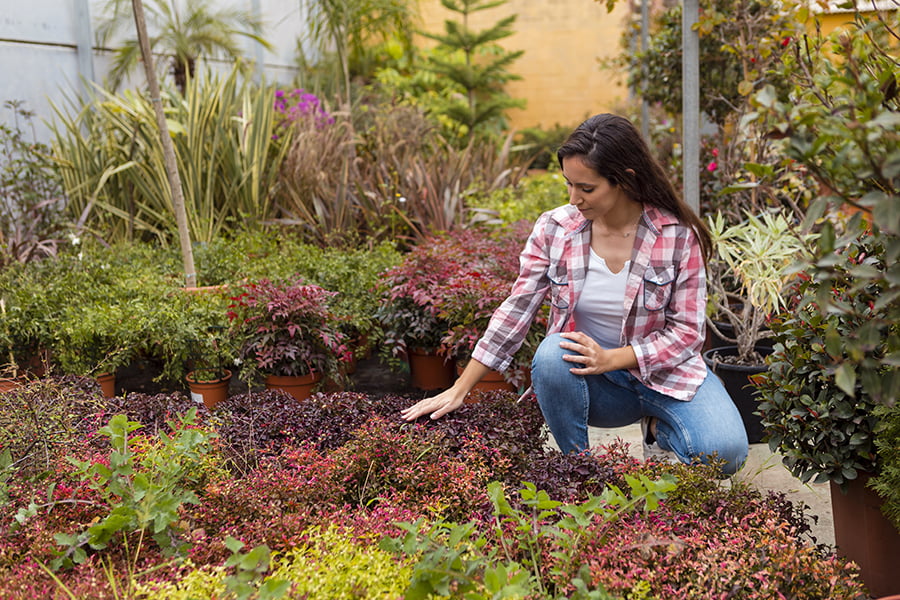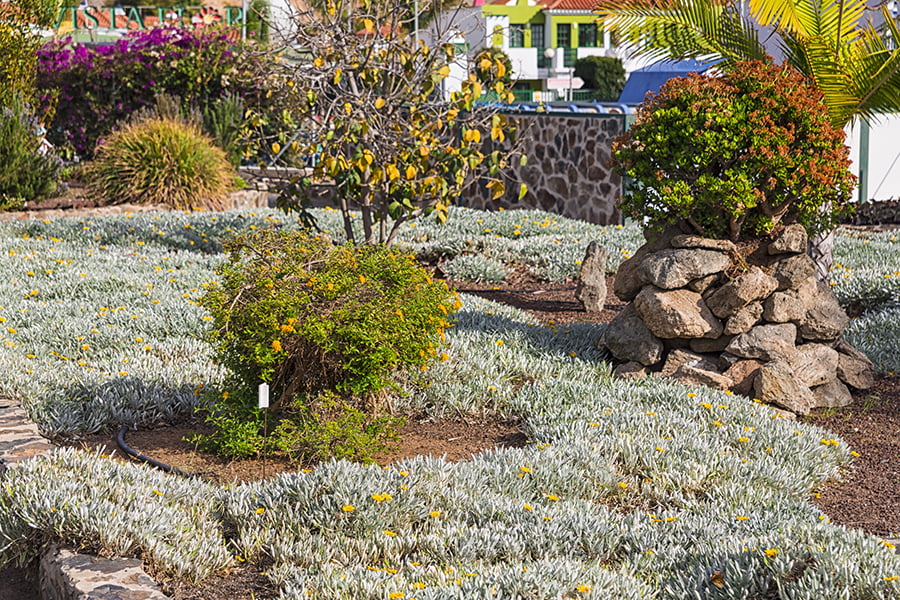Creating a xeriscape that is both functional and visually appealing can be achieved by choosing plants that are drought-tolerant and require minimal maintenance, incorporating hardscaping elements such as pathways or patios, and using color and texture to create an aesthetically pleasing design.
Xeriscape design is an increasingly popular way to create a beautiful and low-maintenance outdoor space. By using drought-tolerant plants, mulch, and other materials, you can create a stunning landscape that requires minimal water and maintenance.
But how do you ensure your xeriscape is both functional and visually appealing? In this blog post, we’ll discuss some tips for designing a xeriscape that is both practical and attractive.
Look Inside:
Plant Selection

When selecting plants for a xeriscape, it is important to consider the climate, soil type, and amount of sunlight available in the area. It is important to select plants that are drought-tolerant and require minimal maintenance.
Choosing native species can help ensure that the plants will thrive in their environment without needing additional water or fertilizer. It’s also helpful to choose a variety of colors and textures when selecting plants for your xeriscape design; this will create visual interest while still being low-maintenance.
Be sure to research any potential plant choices before purchasing them; this will help ensure they are suitable for your particular climate and soil conditions.
Soil Preparation

It involves preparing the soil to ensure it can support the plants and other elements of the landscape design. This includes testing the soil for pH levels, nutrient content, drainage capacity, and texture.
Depending on these results, amendments such as compost or fertilizer may be added to improve soil quality. Tilling or aerating the soil can help increase water absorption and promote healthy root growth.
Mulching should be applied to retain moisture in the soil while also suppressing weeds and improving aesthetics. By taking these steps during soil preparation, you will create a foundation for a successful xeriscape that looks great and functions well over time.
Irrigation Methods

Irrigation methods are used to provide water to plants in the landscape, while also conserving water resources. There are several different irrigation methods available for xeriscapes, including drip irrigation, sprinkler systems, and hand-watering.
Drip irrigation is one of the most efficient ways to irrigate a xeriscape because it delivers water directly to the root zone of plants with minimal waste or runoff. This method uses small tubes or hoses that slowly release water at regular intervals throughout the day or night.
It can be set up manually or with an automated timer system for convenience and accuracy. Sprinkler systems are another popular option for irrigating a xeriscape as they can cover large areas quickly and evenly distribute water over a wide area.
Sprinklers come in many shapes and sizes depending on your needs; some even have adjustable nozzles so you can customize how much water each plant receives based on its individual needs. Hand-watering is an effective way to irrigate smaller areas such as flower beds or container gardens where precision watering is needed more than coverage area.
Hand-watering allows you to control exactly how much moisture each plant receives without wasting any excess water due to evaporation or runoff from other plants nearby.
Mulching Techniques

Mulching involves the use of organic or inorganic materials to cover the soil surface around plants, trees, and shrubs. This helps to conserve moisture in the soil by reducing evaporation, as well as providing insulation from extreme temperatures.
It also prevents weeds from growing and reduces erosion caused by wind or water runoff. Mulch can add visual appeal to a xeriscape design by creating contrast with its color and texture against other elements such as rocks or gravel.
When selecting mulch for your xeriscape design, it is important to consider factors such as climate conditions, type of plant material being used, cost effectiveness, maintenance requirements, and aesthetic appeal.
Hardscaping Elements

These elements can include pathways, walls, patios, decks, and other features that provide structure to a landscape. Hardscaping is an important part of creating a functional and visually appealing xeriscape because it helps define spaces within the landscape and adds visual interest.
When designing hardscaping elements for a xeriscape, it is important to consider materials that are durable and require minimal maintenance. Incorporating native plants into hardscapes can help create an aesthetically pleasing look while also providing habitat for wildlife.
Lighting Design

Lighting can be used to highlight certain features, create ambiance, and provide safety for nighttime activities. When designing lighting for a xeriscape, it is important to consider the type of light fixtures being used, the placement of the lights in relation to other elements in the landscape, and how much light will be needed.
Different types of lighting can be used such as spotlights or floodlights which are great for highlighting specific areas or plants; path lights which are perfect for illuminating pathways; and accent lights which add atmosphere by providing subtle illumination. Placement should also take into account any existing structures or trees that may cast shadows on certain areas at night.
It’s important to determine how much light will be needed based on what activities will take place in the space after dark. By taking all these factors into consideration when designing lighting for a xeriscape, you can create a functional yet aesthetically pleasing outdoor space that looks great day or night!
Color Coordination of Plants and Hardscapes

Color coordination of plants and hardscapes can be used to create an aesthetically pleasing landscape while still being mindful of water conservation. When selecting plants, consider using native species that are adapted to your local climate and soil conditions.
These plants will require less water than non-native varieties, making them ideal for a xeriscape. Choose plants with different foliage colors such as greens, blues, purples or reds to add visual interest to the landscape.
When it comes to hardscapes like pathways or walls, use materials that complement the color palette of your chosen plants. For example, if you have chosen mostly green foliage then select stones or pavers in shades of gray or tan for your pathways and walls.
This will help tie together all elements in the landscape while still providing contrast between plantings and hardscapes for visual appeal.
Use of Native Plants and Drought-tolerant Species

Native plants are those that have evolved in the local area over time, while drought-tolerant species are those that can survive with minimal water. By using these types of plants, you can create a landscape design that requires less water to maintain, while still providing an attractive look.
Native and drought-tolerant species tend to be more resilient against pests and diseases than non-native varieties, making them easier to care for in the long run.
